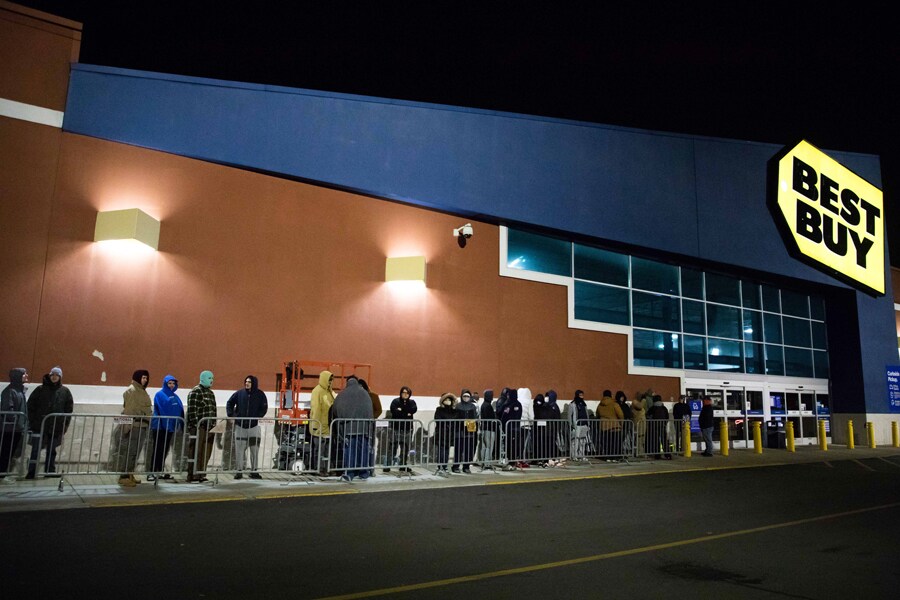
Long lines, brawls, a cottage industry: Inside the mad scramble for video game consoles
Long lines outside retail stores devolving into brawls, desperate shoppers refreshing websites in a bid to outrace the bots and a cottage industry of people trading tips and making money in the process—is the state of the video game console market a year after a new generation of widely coveted devices was released during the height of the pandemic
 Black Friday shoppers line up before dawn on Nov. 26, 2021, at a Best Buy store in Greenwood, Ind. Some retailers like Best Buy give preferential treatment to shoppers who pay a subscription fee, but that doesn’t guarantee them a video game console. (Kaiti Sullivan/The New York Times)
Black Friday shoppers line up before dawn on Nov. 26, 2021, at a Best Buy store in Greenwood, Ind. Some retailers like Best Buy give preferential treatment to shoppers who pay a subscription fee, but that doesn’t guarantee them a video game console. (Kaiti Sullivan/The New York Times)
A few seconds before noon Monday, Jake Randall began encouraging people watching his livestream on YouTube to start refreshing Walmart’s website on their computers.
At his bidding, thousands of people around the country began furiously pounding keys, jostling to get to the front of the retailer’s virtual line for this holiday season’s hottest gift: a video game console. To increase their odds, Randall recommended that the 8,000 viewers on his livestream also get in line through Walmart’s app on their phones. As the minutes ticked by, a lucky few sent Randall screenshots of their purchases. Some sent him donations — about $2,000 in total — as thanks for his help. Others were unsuccessful. In an hour, all of the consoles were sold out.
Long lines outside retail stores devolving into brawls, desperate shoppers refreshing websites in a bid to outrace the bots and a cottage industry of people like Randall trading tips and making money in the process — that is the state of the video game console market a year after a new generation of widely coveted devices was released during the height of the pandemic. The Xbox Series X from Microsoft, with a list price of $499, and the PlayStation 5 from Sony, $399, arrived as the popularity of gaming was skyrocketing with people stuck indoors, and they have been in high demand and short supply ever since.
Now, with the holiday shopping season in full swing, those same consoles remain the must-have gift on many wish lists. The result is fierce competition, both from other gamers and from people who snag as many devices as they can — sometimes using so-called purchase bots to snatch them faster than a human could — and then resell them for two or even three times the purchase price on websites like eBay or Facebook Marketplace.
“I grew up playing video games. Everyone wants to be the video game hero,” said Matt Swider, who quit his journalism job last month and now sits in his apartment in New York City, furiously scanning websites to send out alerts on Twitter to his followers whenever retailers have consoles for sale. “The villains in this story are the resellers employing bots both in person and online.”
©2019 New York Times News Service







